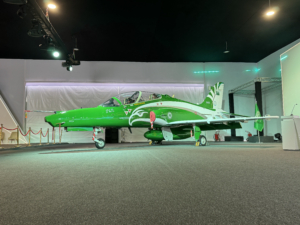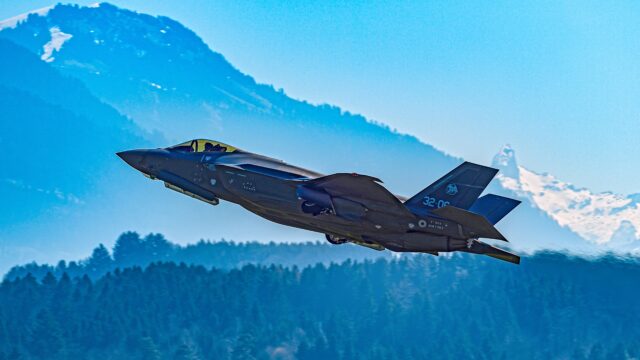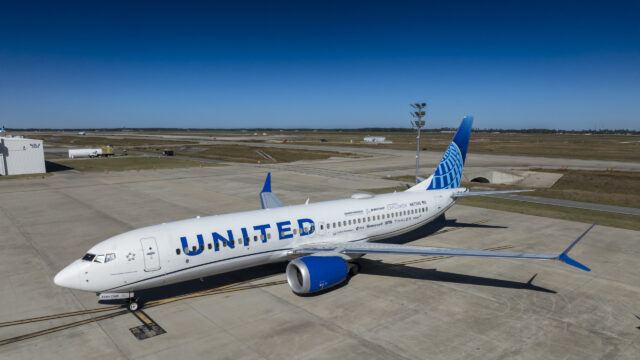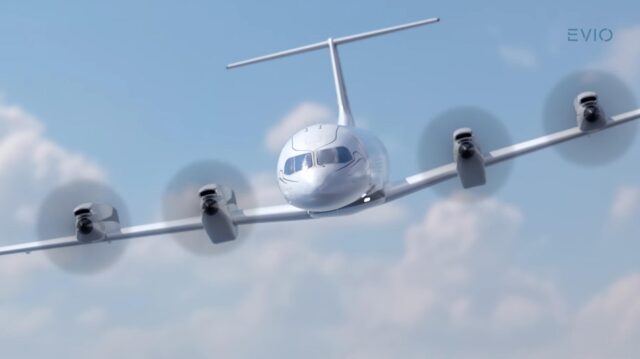“We don’t get what we need from Hawk today,” says the Chief of the Air Staff
November 27, 2024

Britain’s Chief of the Air Staff has criticised the service’s Hawk T.Mk 2 advanced jet trainer, and said that: “I would like to replace Hawk T2 as soon as we can.”
The Chief of the Air Staff, Air Chief Marshal Sir Richard Knighton, used the annual CAS lecture to the Freeman Air and Space Power Institute at Kings College to highlight problems with the RAF’s Hawk T.Mk 2 advanced jet trainer, and expressed his desire to replace it as soon as possible.
“I worry about the lead in fast jet training which is done by the Hawk. That has a really important role to play in our exports. It’s the pinnacle of our flying training, but we don’t get what we need from Hawk today, we are getting half of what we should get out of it. We have problems with engines and support, and speaking frankly, I would like to replace Hawk T2 as soon as we can, in order to deliver a more relevent more reliable training capacity so I don’t have to send pilots overseas. It would also give us the capacity to train overseas pilots here as that is such an important integral part of what we do.”
Advanced flying training on the Hawk T.Mk 2 lies outside the scope of the MFTS contract awarded to the Ascent consortium in late 2006. This £6 billion, 25-year PFI (Private Finance Initiative) contract sought to outsource the training of military pilots and other aircrew from all three UK armed forces to the private sector, and was intended to be fully operational by 2012. The PFI-based solution covered flying training up to, but not including the OCU element of training
The Advanced Jet Trainer element of the UKMFTS programme was originally expected to be provided via a leasing deal under a private finance initiative (PFI), rather than buying an aircraft outright. There was perceived to be a need for an aircraft with a glass cockpit, modern avionics, sensor simulation and weapons emulation, with a flexible and upgradeable mission system, and BAE Systems offered its Hawk 128 (later designated as the Hawk T.Mk 2) to meet the requirement, though the company was unenthusiastic about bearing the cost of developing and building the new Hawk T.Mk 2 aircraft and then having to wait for lease payments, and its first PFI proposal (submitted in March 2003) was judged unaffordable by the Treasury.
There were calls for a full-scale competition against the Alenia M-346 and the KAI T-50 Golden Eagle but these were eventually rejected in favour of a direct purchase of the Hawk, with the number required eventually being set at 28.
The Ministry of Defence awarded a contract to BAE Systems to develop the Hawk Mk. 128 on December 22, 2004, and in October 2006, signed a £450 million contract for the production of 28 Hawk 128s. The new Hawk variant made its maiden flight from BAE Systems’ Warton Aerodrome on July 27, 2005.
The RAF began receiving its first Hawk T2s in 2009, initially maintaining a pool of 4-6 aircraft at Valley for instructor training. The initial aircraft were in an ‘OC0’ standard, lacking the embedded simulation capabilities of the final ‘OC2’ standard. Student pilot training on the Hawk T.Mk 2 began in April 2012.
Though the aircraft were purchased direct, they were fitted into the overall MFTS construct, under which the required infrastructure and simulators were purchased.
From the start, there were problems in meeting the RAF’s requirements for the ‘throughput’ of student pilots, some blaming a shortage of flying instructors, others the number of overseas pilots being trained for allied air forces, and some the Hawk T.Mk 2 itself, which seems to have struggled to achieve the availability required.
Efforts were made to increase the RAF’s fast jet training capacity, and a second Hawk T.Mk 2 squadron re-formed at RAF Valley in September 2018, though without extra aircraft, its impact was relatively small. From 2019-2021 some students were sent to RAF Leeming to train in No.100 Sqn’s ‘aggressor’ roled Hawk T.Mk 1s.
Poor Hawk T.Mk 2 availability was exacerbated by issues that emerged with the type’s Rolls-Royce/Turbomeca (Safran) Adour 951 engine, affecting components in the Safran-manufactured Module 1 of the engine, the low-pressure compressor. The issue is understood to have halved the engine’s life without expensive and time consuming modification work.
The Royal Air Force briefly grounded the entire T.Mk 2 fleet as a precaution at the beginning of 2023, but while the aircraft was soon returned to service, the issue continued to severely limit aircraft availability, as a number of engines were temporarily removed from service as a precautionary measure while the root cause of the issues was investigated and rectified. A lack of spare engines further exacerbated aircraft availability.
It was said then that the issue was likely to negatively impact training capacity for the next two or three years, increasing holding times for fast jet trainees and increasing the backlog.
During an evidence session before the House of Commons Defence Select Committee in May 2023, incoming Chief of the Air Staff Air Chief Marshal Sir Richard Knighton revealed that around 27 fast jet pilot trainees would train overseas before returning to the United Kingdom for their operational conversion unit training, 14 of them being sent to the US-run Euro-NATO Joint Jet Pilot Training (ENJJPT) Program at Sheppard Air Force Base, Texas over a four-year period. The remainder of the 27 ‘overseas’ trainees are expected to train in Italy under the terms of a three year agreement with the International Flight Training School at Decimomannu airbase in Sardinia, where the first cohort of RAF trainees began training in July 2023.
Small numbers of RAF student pilots are also being trained by No.11 Squadron, Qatar Emiri Air Force, the joint QEAF/RAF training unit established at RAF Leeming as part of Qatar’s purchase of the Eurofighter Typhoon. Qatar purchased nine Hawk Mk 167s for the unit, and the RAF was allocated flying hours to allow for the training of a small number of RAF trainees per year, in return for providing facilities at Leeming.
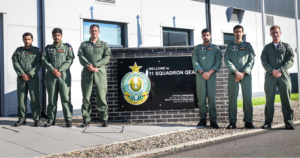
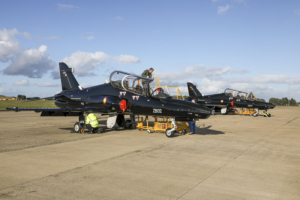
These ad hoc arrangements have helped limit the impact on pilot numbers, but it is still the case that insufficient pilots are being trained (while retention issues mean that more are leaving) and it is calculated that by the end of 2025 RAF pilot manning will be down to about 73% of the required ‘establishment’, with just 826 of 1,133 Flight Lieutenants and 328 of 429 Squadron Leaders – some 408 less than the 1,562 required.
Although Hawk T.Mk 2 availability has increased from its nadir, in early November just nine aircraft were on the line, and availability and ‘through day’ wave reliability is said to still not be sufficient to deliver the required output in terms of trainee numbers and to deliver planned phase 4 daily programming.
Why then, is the RAF Hawk T.Mk 2 performing so badly (in terms of availability and student pilot throughput)? The same basic aircraft with the same Adour 951 engine seems to be performing adequately with the QEAF at Leeming, and in Saudi Arabia, South Africa and Oman. Many believe that this is mainly down to the 951 engine, since the QEAF, RSAF and RAFO aircraft have not reached the kind of engine life where the problems the RAF have experienced start to occur. Some have questioned whether back to back contract arrangements between Safran and Rolls Royce are sufficient to support the necessary rectification work at pace.
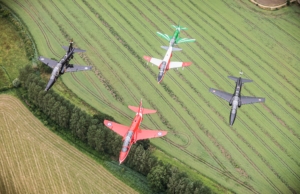
It has been suggested that the aircraft, properly supported, will deliver as designed, and that support arrangements for the RAF Hawk T.Mk 2 are inadequate. This would seem surprising, as BAE Systems have built a world class reputation for delivering gold standard incentivised availability based support contracts for a wide range of aircraft types, and the Hawk Integrated Support Solution (HISS) contract (which cost £56 million in 2023) and associated Hawk Engine Support Solution (an additional £7.88 million) look, on the face of it, to be generously resourced.
Were these contracts poorly framed or badly negotiated? Are they delivering the contracted availability, only for that availability to be inadequate to meet the requirement?
Is the RAF’s availability expectation unreasonable, or even unusually severe?
Some question whether the Hawk’s problems may be being exaggerated by those who would like to see the Future Advanced Flying Training System (FAFTS) requirement brought forward, and for Hawk to be replaced by a new type considerably before its currently planned 2040 out-of-service date (OSD). That could include some of the existing Ascent consortium members, for whom the Hawk (as the only government furnished aircraft used within MFTS) may have provided frustration without generating profit for the group! Ascent is a Lockheed Martin and Babcock joint venture, and is known to have urged government to explore the procurement of an alternative advanced jet trainer in order to keep the MFTS construct relevant.
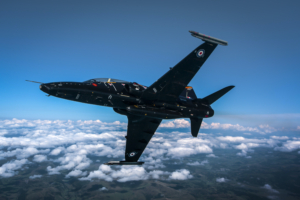
The FAFTS requirement is expected to be formally unveiled as part of the forthcoming Strategic Defence Review, which is expected to report back in the first half of 2025.
Some have expressed concerns that the Hawk T.Mk 2 will be inadequate to prepare pilots for future aircraft including GCAP, though it is unclear exactly how it falls short, nor how any currently available trainer aircraft type would be significantly better equipped to do so.
Some advocate an RAF buy of the US Boeing T-7A Red Hawk, perhaps built under licence at Samlesbury and with a UK embedded training system and avionics. Others believe that the T-7A lacks the endurance and range required for operating in European weather, when generous reserves of ‘diversion fuel’ might be required.
Others suggest that the UK may have looked at Türkiye’s Hürjet – perhaps being bought in associaton with a Turkish buy of the Eurofighter Typhoon. Defence Secretary John Healey was recently photographed being shown the Hürjet’s cockpit.
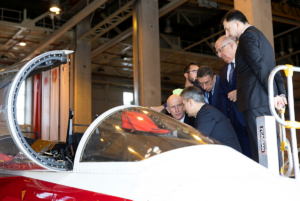
BAE Systems is understood to have proposed the so-called Hawk T.Mk 3, an upgrade configuration for the Hawk T.Mk 2 with an enhanced cockpit and an updated mission computer.
An outside contender could be the modular concept being developed by Aeralis, though the aircraft seems to enjoy little support in RAF circles.
